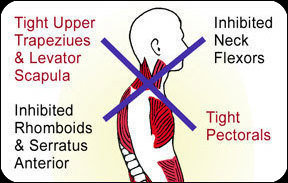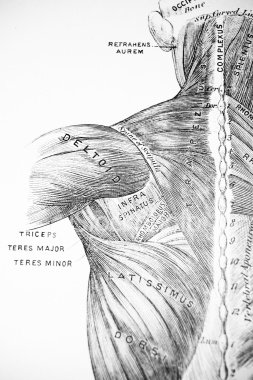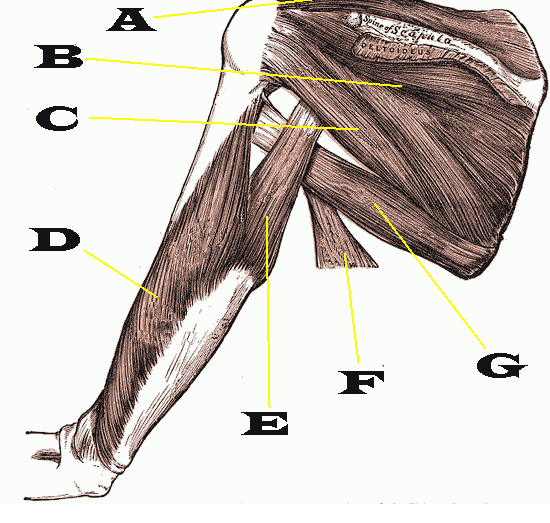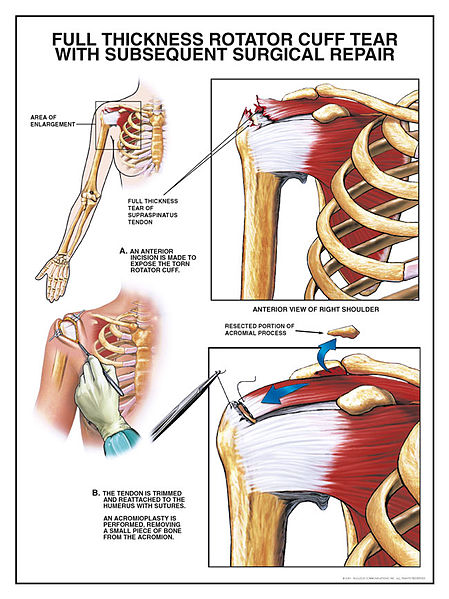Enhance your health with free online physiotherapy exercise lessons and videos about various disease and health condition
Upper Cross Syndrome
Upper Cross Syndrome is characterized by rounded shoulders with an anteriorly tipped shoulder blade (scapular) and forward poking chin. Dr Vladimir Janda, a Czech Physician and Physiatrist was the first to identify the common muscle imbalance denoted the upper cross syndrome.

(UCS) is also referred to as:
- proximal or shoulder girdle crossed syndrome
- cervical crossed syndrome
- slouched posture
- student syndrome
- forward neck posture
Typical Mscle Imbalance in the Upper Cross Syndrome
Tight, Facilitated
- Pectorals
- Upper Trapezius
- Levator Scapula
- Sternocleidomastoid
- Suboccipitals
- Subscapularis
- Latissimus Dorsi
- Arm Flexors
Weak, Inhibited
- Longus Capitis
- Longus Colli
- Hyoids
- Serratus Anterior
- Rhomboids
- Lower Trapezius
- Posterior Rotator Cuff
- Arm Extensors
It is most often found in individuals who work at a desk or who sit for a majority of the day and continuously exhibit poor posture. In UCS, tightness of the upper trapezius and levator scapula on the dorsal side crosses with tightness of the pectoralis major and minor. Weakness of the deep cervical flexors ventrally crosses with weakness of the middle and lower trapezius. This pattern of imbalance creates joint dysfunction, particularly at the atlanto-occipital joint, C4-C5 segment, cervicothoracic joint, glenohumeral joint, and T4-T5 segment. (Janda 1988)
Upper Cross Syndrome (UCS) can be characterized by:
- Rounding of the shoulder complex
- Shoulder blade misalignment
- Forward head posture
- Decreased stability or range of motion in the shoulder joint
- Increased neck or upper back pain
Symptoms of Upper Cross Syndrome
Complaints of people with upper crossed syndrome are typically stiffness in the neck, headaches, tension and soreness along the slope of the shoulder, front of shoulder, and tight, sore, upper back. Upper crossed may also result in neurological problems (from tingling or pins and needles to shooting pain and numbness) extending into the arms, hands, and fingers.
Upper Crossed Syndrome Physical Therapy Treatment
When sitting in front of the laptop, ensure that:
- 1. The screen is right in front of your eyes. No poking chin or facing downwards.
- 2. The keyboard should be at a level such that your elbows are bent at 90 degrees shoulders slightly back and wrist remain in neutral position with feet well supported on the ground and back erect.
- 1-Stretching the tight muscles
- 2-Strengthening the weak and elongated muscles
- 3-Postural Correction
- 4-Manual Therapy / Joint Mobilization / STM / Myofascial Release
- 5-Modalities
Similar Pages
Self Corrective Exercises for Upper Cross Syndrome
Levator Scapulae Stretch
To stretch the left levator scapula, reach onto the top left side of your head with your right arm and use this to aid the stretch as you look across and down. The stretch should be gently felt through the neck and levator scapula at which point hold your position for 10-15 seconds making sure to continue with deep calm breaths. Release the stretch and relax before repeating two or three times. To make the stretch deeper, place your left arm behind your back.
Upper Trapezius Stretch
Sit straight up in a chair with your shoulders relaxed. Bring your chin down toward your right collar bone as far as you can without rounding your upper back. Then turn your head slightly to the left. You should feel a pulling sensation in the left side of the neck. Hold this position for 20 seconds. Rest 15 seconds and repeat again twice on that side. Then perform the stretch on the opposite side three times.
Pectoralis Door-way stretches:
These are great for lengthening tight pectoral muscules. Placing one or both arms along the door way and slightly stepping forward will apply some pressure to the muscles. Be sure not to step too far forward and strain your low back by over extending it.
Foam Roller:
Lay over a foam roller with your hands under your head. Bridge up off of the floor and roll back and forth over your upper thoracic kyphosis. Repeat for 1 minute.
Scapular Retractions:
Bring your shoulder blades (scapulae) down toward the ground and back. The idea is to squeeze them together so you could pinch a pencil between them. This activates the Rhomboids and lengthens the pectoral muscles.
Chin-tucks:
This is an easy stretch to do at your desk. This stretch will activate the muscles required to maintain proper head position. Sit up straight, now move your head slightly straight backwards creating the "double chin" effect. This will help combat the forward head carriage that many people suffer from.
Brugger Posture:
Stand up from your desk, open your hands up and rotate your thumbs backwards. This will relax your upper traps and allow the shoulder blades to slide down and back to your back pockets. Take a deep breath in through the nose and slowly let it out through the mouth. Repeat 2 times.
Middle and Lower Trapezius Strengthening
Serratus Anterior Strengthening
References
- Upper crossed syndrome and its relationship to cervicogenic headache. J Manipulative Physiol Ther. 2004 Jul-Aug;27(6):414-20.
- Upper Crossed Syndrome – The Personal Trainers Guide
- Stretches for Upper Cross Syndrome- LIVESTRONG.COM
Return to Orthopedic Physical Therapy
Recent Articles
|
Author's Pick
Rating: 4.4 Votes: 252 |




